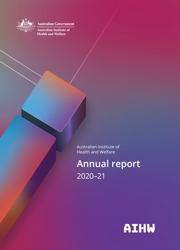Putting cancer screening in perspective
Our challenge
Evaluating effectiveness of cancer screening using available data
Australia has 3 national cancer screening programs for the early detection of cancer or precancerous changes, even when there are no symptoms. According to the World Health Organization (WHO), the effectiveness of screening is determined by whether it produces a population survival benefit that can be assessed by clinical and population-based cancer registry and screening data.
Cancer screening in Australia began in the 1960s with ad hoc cervical screening. More structured programs were introduced from the early 1990s: the National Cervical Screening Program began in 1991; the National Program for the Early Detection of Breast Cancer – now known as BreastScreen Australia – was established in 1991; and the National Bowel Cancer Screening Program was introduced in 2006, and fully implemented in 2020.
Our response
Combining data for national reporting
In 2018, the AIHW released the national results from an Australian-first project, combining data from BreastScreen Australia, the National Cervical Screening Program, the National Bowel Cancer Screening Program, the Australian Cancer Database, the National Death Index and the National HPV (human papillomavirus) Vaccination Program Register. ‘Without exception, this analysis showed that all 3 programs significantly reduced the burden of these diseases on the Australian community,’ said Ms Caroline Arthur, Director of Screening Policy at the Department of Health.
Our results
Screening programs supported by data
For breast cancer, the national data showed that those whose breast cancer was detected through BreastScreen Australia were 42% less likely to die from it within the study period than those diagnosed with breast cancer who had never been screened. The statistics were equally compelling for bowel cancer screening: the risk of dying from the disease was lower in those detected through the program than those who were not. This study also showed that people who participated regularly in cervical screening were less likely to develop cervical cancer, with more than 70% of cervical cancers occurring in women who had never been screened or who had not done so for some time.
‘The figures give us a lot of confidence that the programs are worth running,’ Ms Arthur said. ‘If you compare all 3 programs in terms of how many dollars it takes to save a life, there is some variation. But I think most taxpayers would say it’s a reasonable price to pay.’
‘The AIHW helps keep the programs in the public eye and makes it clear what we are getting for this investment. This provides the opportunity to not only see that women survive better if their cancer is detected early, but how much money screening can save the health system,’ Ms Arthur explained.
Our analysis of cancer screening data will continue to drive developments in the health ystem, as well as improve outcomes for patients.



